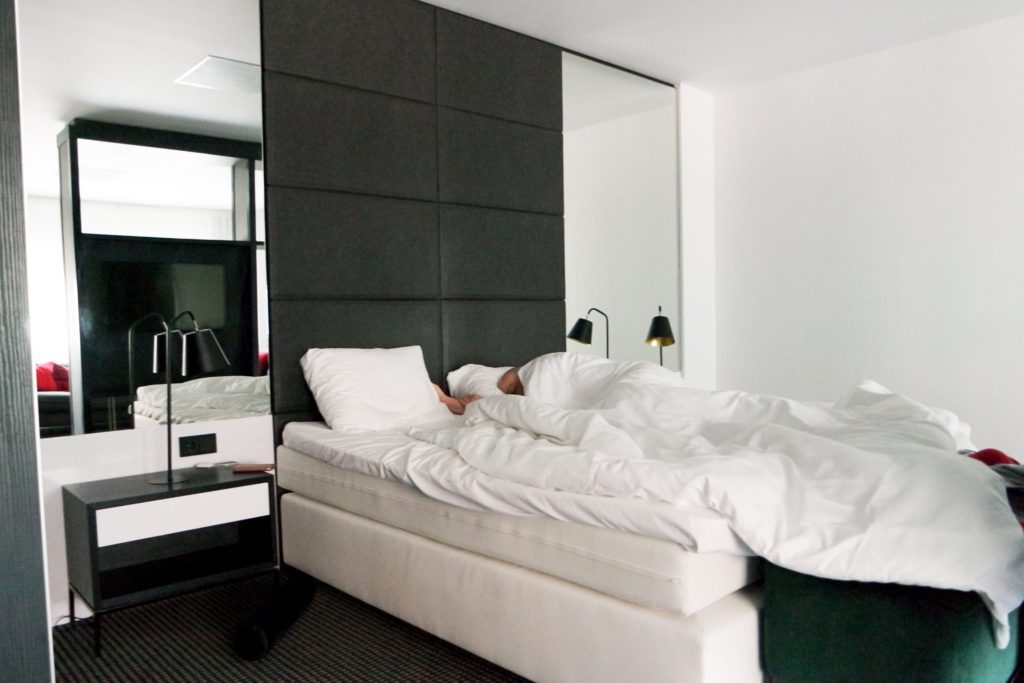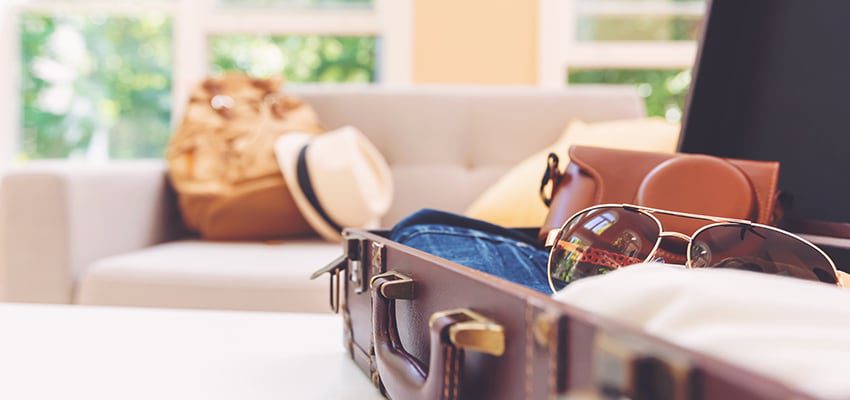If you’ve traveled through time zones even occasionally, you’ve likely noticed a distinct phenomenon of jet lag: it’s easier to travel west than to travel east. Jet lag—with its symptoms of fatigue, mental sluggishness, headaches, sleep problems, and disorientation, among others—is the body’s response to disruption of it’s circadian rhythms, which regulate our sleep-wake cycles as well as many other important physiological processes.
The body’s roughly 24-hour circadian rhythms are deeply connected to the solar night and day and to daily exposure to light (and darkness) in all its forms. When we cross multiple time zones, our circadian “clocks” become desynchronized, with internal time no longer aligning with external time. The body’s circadian system is both highly sensitive and also incapable of immediately adjusting to changing time zones and a new solar night and day. The result? Varying degrees of enervating, disorienting, foggy-headed jet lag.
Your Circadian Rhythm and Jet Lag
So, we have an understanding of why jet lag occurs, and we certainly know what jet lag feels like, in all its sleep-weary glory. But why is jet lag so often worse when traveling east than west? Why is it harder for the body to move its circadian clock forward than it is to shift it backward?
Scientists have posited that the asymmetry of jet lag—the increased impact that results from eastward travel compared to westward—is connected to the fact that human circadian rhythms, on average, extend slightly beyond 24 hours. This means that at a biological level we’re all slightly inclined toward extending our days at their end rather than at their beginning—essentially, we find it somewhat easier to behave like night owls than larks. The length of circadian cycles also varies slightly from individual to individual, with some people possessing slightly longer circadian rhythms than others. These people may experience eastbound jet lag more intensely than others.
Modeling the Body’s Master Clock
New research lends support to this theory, and reveals some interesting patterns in the body’s response to time-zone crossing travel. Scientists at the University of Maryland investigated the differences in jet lag that arise from eastward versus westward travel. They took an inventive approach to studying the directional impact of jet lag. Using what’s known about the body’s master circadian clock, located in a region of the brain known as the suprachiasmatic nucleus or SCN, scientists created a mathematical model that re-creates a simplified version of the clock’s activity. With this model, scientists were able to analyze the dynamics of cross-time-zone travel, eastward and westward.
Scientists used their mathematical model to test eastward and westward travel across different numbers of time zones, with different degrees of time changes, up to 12 hours. Their model determined the amount of time it would take for the body’s master circadian clock to adjust to the new time zones.

Their results showed that the SCN cells responsible for keeping the body’s internal circadian time reacted more sluggishly to eastward travel, requiring significantly more recovery time than travel westward. The difference in severity of disruption was great enough that shorter trips east required longer jet-lag recovery time than longer trips west. For example, researchers found that it takes several additional days to recover from an eastward trip that incurs a 9-hour time change, compared to a 9-hour change traveling west. They also found that a 9-hour time change traveling eastward requires more significant recovery than a 12-hour time change delivered by traveling east or west. Adjustment to a 9-hour time shift from eastward travel was determined to be the most taxing to the body’s circadian system, according to the researchers’ model, requiring the most recovery time from jet lag.
The model allowed for individual differences among factors that influence the activity of the master circadian clock and it’s response to time-zone changes. In addition to the distance of travel and the degree of time-zone change, the model also took into account:
- Individual sensitivities to light
- Timing, intensity and type of light exposure
- Variations to the timing of individual circadian clocks
Scientists’ mathematical model showed that these factors influence how individuals experience jet lag, reinforcing our understanding of reasons why some people are more deeply affected by time-zone changes in either east or west travel than others. The model also indicated that exposure to bright sunlight in the new time zone—one of the most frequently given pieces of advice in combating jet lag—does reduce the time it takes for the body’s circadian clock to adjust.
A Timekeeper in the Brain
How does the SCN work as the body’s master circadian timekeeper? This tiny area of the brain, located within the hypothalamus, contains roughly 20,000 cells that function as pacemakers for the body’s circadian rhythms, regulating circadian timing in cells throughout body. The SCN and its pacemaker cells are deeply involved in the body’s sleep-wake cycle, which is driven in large part by circadian rhythms. In addition to sleep and activity, several other physiological and behavioral functions, including feeding, digestion, body temperature and hormone fluctuations, are regulated by circadian rhythms. Among its important contributions to sleep-wake cycles, the SCN regulates levels of the hormone melatonin, which at elevated levels plays a critical role in preparing the body for sleep.
Scientists have identified specific “clock” genes that enable and support circadian function through the activity of the SCN. The pacemaker cells of the SCN take critical cues from light in the environment. Photosensitive cells in the retina of the human eye transmit information about light and darkness to the SCN.
Scientists are still investigating exactly how the synchronization of circadian rhythms works. There is abundant evidence indicating that the SCN uses the information it captures about light to daily synchronize the body’s circadian system to its roughly 24-hour time. There is also evidence suggesting that SCN pacemaker cells aren’t the only ones synchronizing to light and dark cues, but that other cells throughout the body may also have the capacity to synchronize independently of the SCN’s master clock.
The body’s circadian system is strongly influenced by external time, in keeping with the solar night and day. But circadian rhythms are highly sensitive to all forms of light, natural and artificial. Light exposure at the wrong time of day interferes with circadian function and sleep-wake cycles, throwing the body’s internal timekeeping out of sync with external time. This common occurrence results in what’s known as social jet lag—the kind of jet lag you can experience without ever leaving home or crossing time zones.
This investigation used a theoretical mathematical model, which extrapolates how the human circadian system is likely to react to the impact of eastward and westward travel. This, of course, isn’t the same thing as observing these reactions in humans themselves. However, these findings provide an illuminating perspective on the influence of direction over jet leg, as well as the mechanics of the circadian system and its variable reactions to travel. They also echo what travelers know through experience: when it comes to jet lag, it’s not only the distance of the trip that matters, but also the direction.
References
Ask the Sleep Doctor
Have questions about sleep? Submit them here! We use your questions to help us decide topics for future articles, videos, and newsletters. We try to answer as many questions as possible. You can also send us an email. Please note, we cannot provide specific medical advice, and always recommend you contact your doctor for any medical matters.







